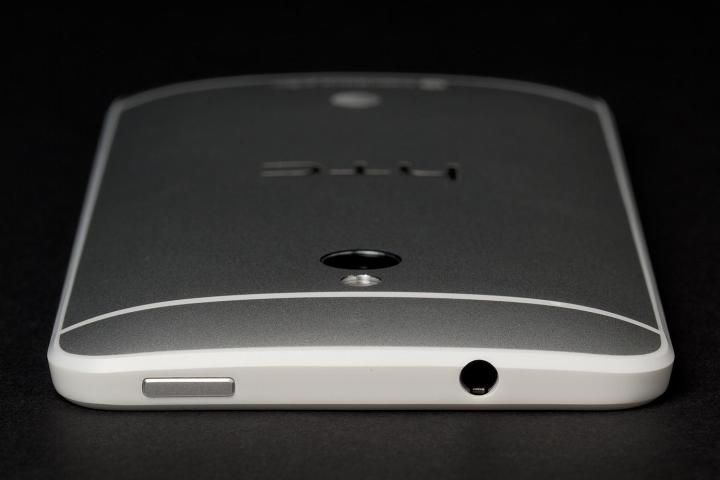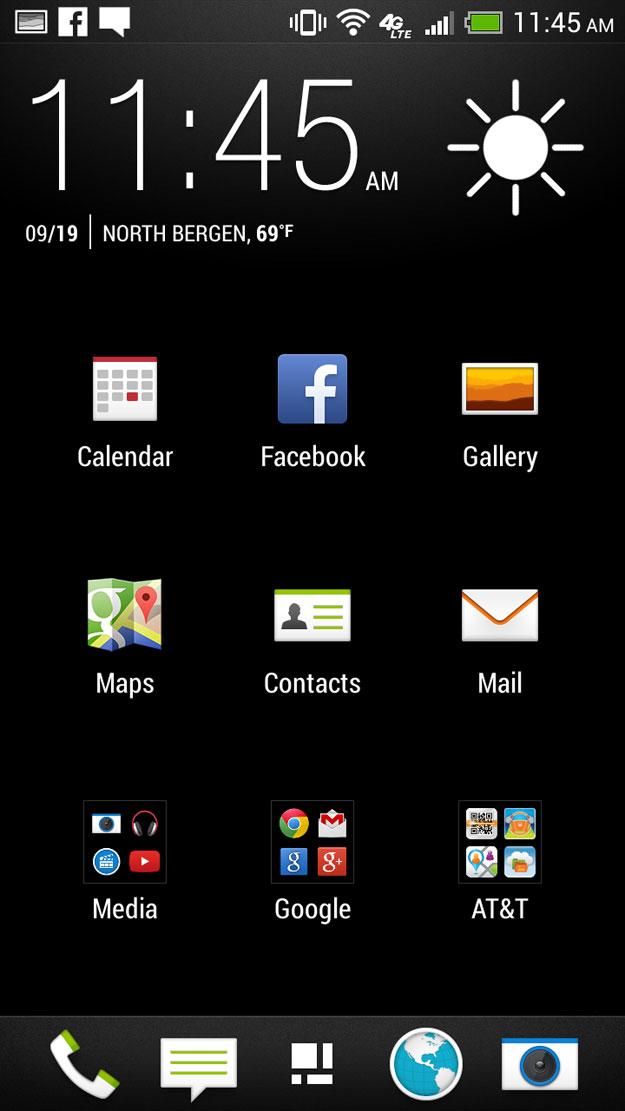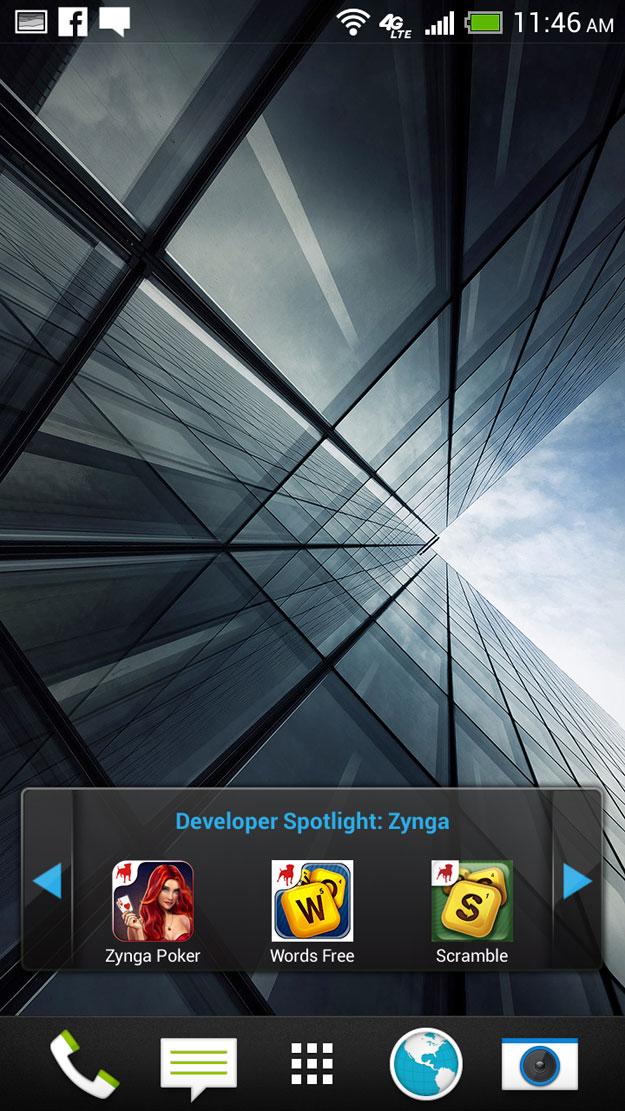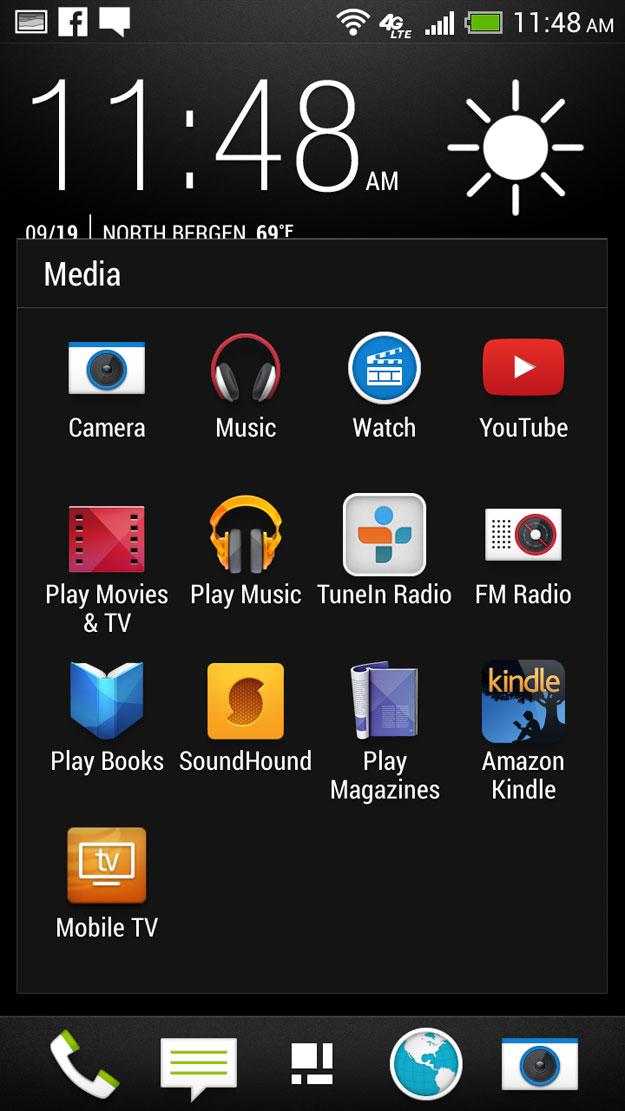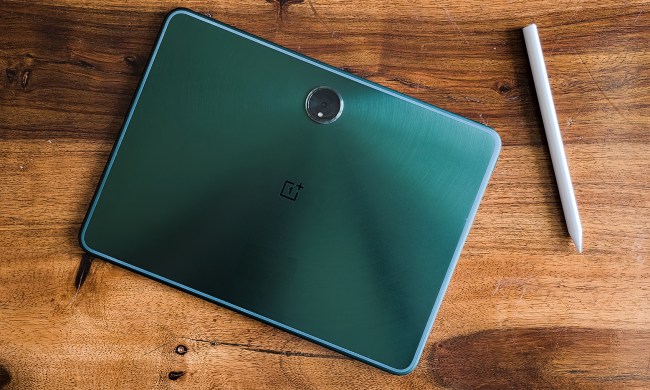“The HTC One Mini is a good-looking, very comfortable, mid-range phone with a nice screen. But short battery life means most should just pay an extra $100 for the HTC One.”
- Nice-looking screen
- Great build quality like the HTC One
- More comfortable to hold than larger-screen phones
- Great low-light camera
- Poor battery life (can’t last a day)
- Gets warm when gaming and streaming video
- Speakers aren’t nearly as impressive as HTC One’s
- No expandable storage or removable battery
Despite the rise of massive smartphone/tablet hybrids like Sony’s Xperia Z Ultra and Samsung’s Galaxy Mega, not everyone is clamoring for a large screen. If they were, Apple wouldn’t be sticking to the 4-inch form factor with the 5S and 5C, and Samsung wouldn’t be offering up the S4 Mini as an alternative to the company’s 5-inch-screened Galaxy S4 flagship.
The Mini reminded us how convenient using your phone with one thumb can be.
HTC knows this as well, which is why, after the success of the aluminum-clad HTC One, the company is offering up a more modest HTC One Mini ($100 on AT&T with a new contract). The Mini sports a great-looking 4.3-inch Super LCD panel and feels much narrower in the hand than the HTC One. That, combined with the sloped aluminum backside the Mini borrows from the HTC One, makes it one of the most comfortable smartphones we’ve held.
But the HTC definitely cut some corners with this slightly smaller model. Is the HTC One Mini worth considering over the colorful new iPhone 5C, or the slightly larger HTC One, which is $100 more? You’ll have to read on to find out, because it depends on whether you’ll miss some of the features the Mini lacks, which we’ll dive into below.
A Familiar exterior
There’s no denying that the HTC One’s all-aluminum shell looks and feels great. The two front speaker grilles and most of the back of the device are aluminum, just like on the One. The design mixes in white plastic around all four edges of the phone, as well as a couple strips along the back.

And whether you’re a plastic apologist or not, the material generally holds up better to dings and drops than aluminum. It also feels every bit as sturdy as its larger sibling, and feels more like a premium device than Samsung’s glossy plastic Galaxy S4.
But that rigidity and solid build comes at a price. Just like the HTC One, the One Mini doesn’t have a removable back. You can’t replace the battery or add more storage (no MicroSD). 16GB is all you get with the Mini. The HTC One at least, is a bit roomier inside, with 32GB or 64GB models available.
App clutter doesn’t feel as bad here as Samsung phones, but it’s still noticeable and annoying.
Despite its name, the Mini isn’t all that much smaller than the HTC One overall – at least on paper. Both devices are 0.36 inches thick (but thinner at the edges), and the Mini is 5.2 inches tall to the One’s 5.4 inches. Since you’ll most often be holding your phone in portrait orientation, though, width is what really matters. And here again, the Mini’s 2.5 inch width is only slightly less than the One’s 2.7 inches.
But a little goes a long way. The Mini feels noticeably narrower. It’s more comfortable to palm, and easier to use with just one hand. One-handed use used to be a given with smartphones, but as Android phone screens have pushed toward 5 inches and above, we’ve resorted mostly to using two hands when doing anything more complicated than scrolling. The Mini reminded us how convenient using your phone with one thumb can be.
1080 what? Another excellent 720P screen
Spec hounds will no-doubt dismiss the Mini’s 1280 x 720 pixel resolution LCD screen as a big sacrifice compared to the One’s 1080p panel. But you know what? At the Mini’s 4.3-inch screen size, 720p looks pretty great, especially because the Mini’s screen is of high quality, just like the higher-resolution screen on the HTC One. Viewing angles are excellent, and the screen is plenty bright unless you’re stuck in direct sunlight.
Audio output doesn’t fare as well, though. The two front-facing speakers do an okay job for a mid-range phone. But despite the Beats branding on the back, the Mini’s speakers don’t output nearly as much sound or bass as the HTC One. And at maximum volume, there was noticeable crackling and popping.
We like Ultrapixel cameras
Pleasingly, HTC carried over the same 4 “Ultrapixel” camera from the One to the Mini. You can generally expect good-looking photos from the Mini, and better images in low-light. The Mini was able to snap serviceable indoor shots in dim light that were mostly just black rectangles when taken with the Samsung Galaxy S4’s camera.
The tradeoff, though, is image size: Photos with the Mini are large enough for digital sharing, but they won’t look good when blown up as large prints. If you’re doing those kinds of things with your photos, though, you should be using a DSLR or, at least, a point-and-shoot. The Mini’s camera excels at the kinds of things most people do with phone cameras and photos. It’s one of the best cameras available in a mid-range smartphone – especially if you like to take pictures in restaurants and bars.
HTC’s interface is pretty, but rigid
HTC’s Sense Android skin and Flipboard-like BlinkFeed carries over from the One to the Mini as well. We certainly like the look and feel of Sense more than Samsung’s TouchWiz Interface on its phones. It makes Android feel more organized and simple (the opposite of what happens with TouchWiz), which makes HTC’s devices a nice fit for novice smartphone users or recent Android converts. We especially like how HTC groups some into category folders (Google, Media, AT&T, etc.) so they’re nicely organized and don’t take up much space.
But BlinkFeed, while pretty, isn’t as customizable as it should be. You can add news categories, your social network feeds, and some specific news and media outlets (like AP, Gawker, and ESPN) into a visually pleasing, vertical-scrolling feed. But you can’t add specific sites that aren’t on the list (like, say, Digital Trends). And if you’d like to hide BlinkFeed for a more traditional Android experience, you’ll need to use a third-party launcher (Like ADW or Apex) to override the Sense skin. Hopefully HTC will update BlinkFeed with more customization options (and an off switch), because otherwise, Sense is a nice alternative to stock Android.
The other gripe we have with the Mini’s software is the multitude of pre-installed apps, at least on the AT&T-branded model we tested. The Mini hides its app clutter better than Samsung does, but there are 15 apps in the AT&T folder, including alternatives to services like Dropbox, Google Play’s Game section, and the Yellow Pages app. And swiping left a couple times from BlinkFeed brings you to a home screen that has a billboard-like widget that rotates ads for other services and apps. As we said, the app clutter doesn’t feel as bad here as on the Galaxy Mega and some other phones, but it’s still noticeable and annoying.
Specs, performance, and battery life
While the Mini looks a lot like the One on the outside, inside, it’s a decidedly more mid-range device. Aside from the reduced resolution of the screen and storage being cut to 16GB, the quad-core processor in the One has been replaced by a 1.4GHz dual-core Snapdragon 400 chip. And RAM has been reduced from 2GB to 1GB.
The Mini certainly isn’t as snappy as the One, and we wish HTC had stuck with 2GB of RAM.
That being said, games ran well. The Epic Citadel benchmark turned in a High Performance rating, and we a played a few rounds of Anomaly Korea without noticing any hitches or glitches. But the Mini’s small screen isn’t really as gaming-friendly as larger-screen phones, especially for complex titles like Anomaly.
Also, during heavy use, when gaming or streaming video, the entire back of the Mini gets noticeably warm. Many phones can get warm in specific areas after prolonged use. But the aluminum shell of the Mini seems to dissipate the heat over a wider area than plastic, which makes it more noticeable. The larger HTC One had this problem as well. If you keep your phone in a plastic case, you may not notice the Mini’s warm backside.
Battery Life
HTC also cut battery capacity from the One (2300mAh) to the Mini (1800mAh). But the Mini has a smaller, lower-resolution screen and half the RAM and processor cores as the One, so we weren’t sure what to expect from the Mini’s battery life.
After a few full days of steady use, though, we didn’t come away impressed. We got about 11 hours of medium to heavy use out of the Mini – making phone calls, doing some gaming, and taking and uploading photos on WiFi and 4G – before the battery dropped below 5 percent and the phone went into battery-saving mode. If you don’t use your phone that much, you could probably get through a day without a recharge. But you’ll want to keep a charger at work, in case you have to make a couple of lengthy calls or you want to catch up on a TV show during your commute.
Conclusion
The HTC One Mini is one of the nicest-looking mid-range smartphones we’ve ever had laid eyes on. It’s also extremely comfortable to hold and easier to use with one hand than larger-screen devices that (iPhone aside) dominate the market these days.
But at its current $100 price, we don’t think it makes sense for most buyers, when the much better HTC One can be had for $100 more (or $50 more if you’re willing to take a refurbished phone). The One has better battery life, a higher-res screen, much better speakers, more internal storage and better performance than the Mini.
Those bored with iOS, but want to stick with a small screen may find the Mini appealing for its small size and low price. But if the iPhone’s screen size isn’t an issue for you, you may want to give iOS 7 and the new iPhone 5C some consideration, as it can be picked up at retailers like Target and Walmart for $20 less than the Mini.
The Mini’s screen and solid build quality are good for a mid-range phone, but we don’t think the sacrifices (there’s also no NFC chip) HTC made when stepping down to the Mini are worth saving $50 or $100 for a device you’re likely to be stuck with for two years. When the Mini’s price drops to $50 or becomes free on contract, it’s definitely worth of consideration if you’re partial to small screens. Just make sure you keep a charger handy if you don’t leave your smartphone in your pocket.
Highs
- Nice-looking screen
- Great build quality like the HTC One
- More comfortable to hold than larger-screen phones
- Great low-light camera
Lows
- Poor battery life (can’t last a day)
- Gets warm when gaming and streaming video
- Speakers aren’t nearly as impressive as HTC One’s
- No expandable storage or removable battery



